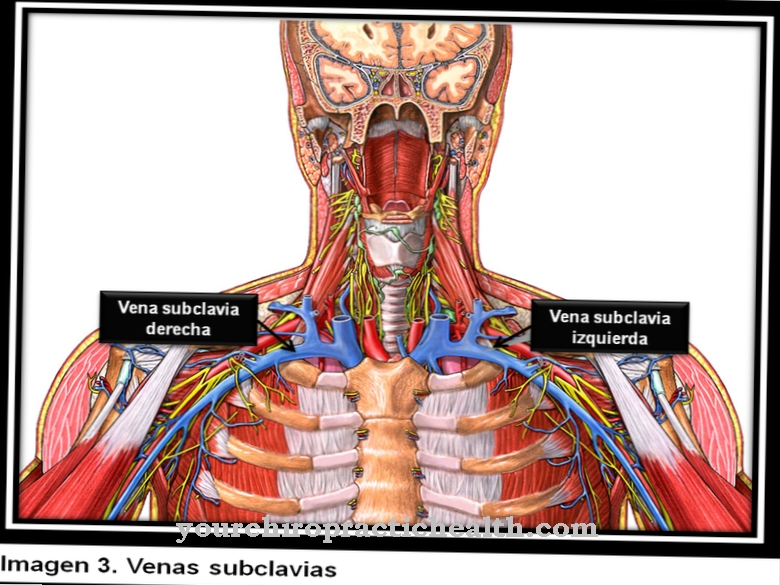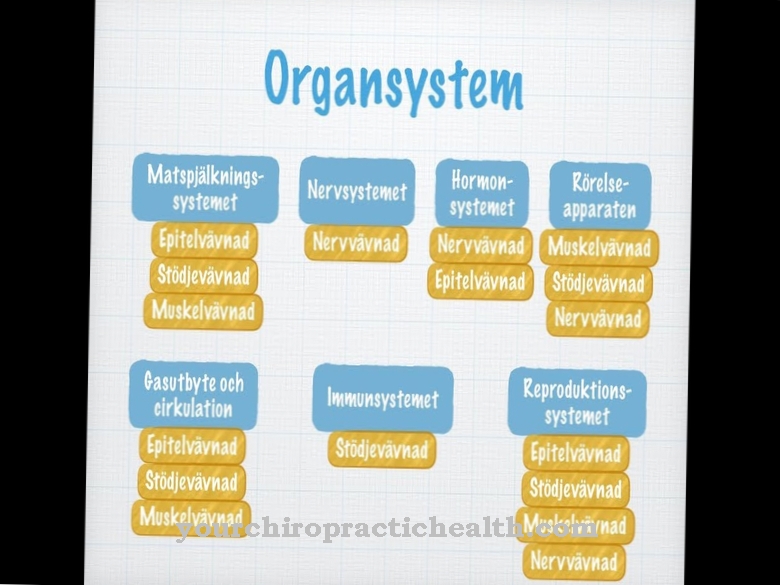At the upper jaw it is the largest bones of the facial skull. It forms the counterpart to the lower jaw.
What is the upper jaw?
As an upper jaw (Maxilla) is called the largest bone of the human facial skull. Its counterpart is the lower jaw (mandible). The upper jaw is formed by two pair of bones. It is firmly attached to the skull.
The maxilla delimits three body cavities. These are the lateral wall of the nasal cavity (Cavum nasi), the floor of the bony eye socket (Orbita) and the hard palate (Pallatum durum) in the oral cavity. In the upper jaw there is also the maxillary sinus, which is one of the largest cavities in the skull area.
The upper jaw represents an important part of the facial skull. It is important for the intake of food and influences the language and appearance of people. There is a firm bond with the cheekbone and the nasal bone. However, the upper jaw is only indirectly connected to the lower jaw.
Anatomy & structure
The body of the upper jaw can be divided into four different areas. The face surface (facies anterior) can be found on the front edge of the body of the maxilla. The lower temple surface (facies infratemporalis) lies at the rear edge of the face. The orbital surface (facies orbitalis) of the upper jaw provides the lower border of the eye socket.
The lateral part of the nasal cavity boundary is formed by the nasal surface (Facies nasalis). Since the upper surface of the upper jaw is not smooth and even, there are several depressions, passages and extensions on it. The frontal process, which serves as a connecting structure, is located between the frontal bone, the lacrimal bone and the nasal bone. The yoke process (processus zygomaticus) can be found at the lower edge of the surface of the eye socket. The alveolar process (Processus alveolaris), which has the shape of an arch, performs an important task. It carries the teeth, which are extremely important for chewing.
Another structure of the upper jaw is the palatal process (processus palatinus). This plate-shaped structure is located between the nasal surface and the alveolar process and forms the hard palate.
The upper jaw is supplied by various nerves and vessels. This includes the maxillary nerve (maxillary nerve), which splits off from the trigeminal nerve, the fifth cranial nerve. From this nerve cord a smaller cord is released, which is called the infraorbital nerve. The nerve runs through the upper jaw and takes care of the teeth and bones. The maxillary artery (arteria maxillaris) is responsible for the blood supply to the upper jaw. This blood vessel is a direct continuation of the outer part of the carotid artery (external carotid artery).
Function & tasks
Just like the lower jaw, the upper jaw is also important for the intake of food. The teeth play a decisive role in this. There is a relatively firm anchorage in the upper jaw due to the teeth holding apparatus. In contrast to the lower jaw, the upper jaw is immobile because the jaw joint only triggers movements of the lower part of the jaw. However, just like its counterpart, it affects the visual appearance of a person. It also influences a person's pronunciation.
The tooth-supporting apparatus, which belongs to both the upper and lower jaw, has various protective functions. It is made up of different parts. These include the alveoli, which are small indentations in the jawbone. The root part of a single tooth is found in the alveoli.
Other important components of the periodontium are the periodontium, the cementum, and the gums (gingiva propria). However, the teeth are not completely fixed in the jawbone. Each tooth is suspended from a Sharpey fiber, a collagen fiber bundle. In this way the tooth can remain relatively mobile. In addition, the pressure loads when chewing are distributed over a larger area.
You can find your medication here
➔ Medication for toothacheDiseases
Various complaints and diseases can occur in the upper jaw. The most common injury is the fracture of the upper jaw (fractura maxillae). This leads to break lines that have typical gradients. These correspond to the weak points in the bone architecture. A fracture of the upper jaw is mostly caused by falls, sports accidents, traffic accidents or fights. A fracture of the upper jaw accounts for around 15 percent of facial fractures.
One of the most common diseases of the upper jaw is inflammation of the maxillary sinus (maxillary sinusitis). The maxillary sinus is one of the paranasal sinuses. The inflammation is caused by viruses or bacteria that negatively change the mucous membrane in the paranasal sinuses. The maxillary sinus infection can be acute or chronic. The acute form is noticeable through headaches, feelings of pressure in the head region, considerable malaise and high fever. The acute form sometimes changes into the chronic form. This happens when an inflammation has not healed sufficiently. Sinusitis can also occur after pulling a tooth out of the upper jaw. Treatment is usually with antibiotics.
In addition to injuries and diseases, deformities are also possible in the upper jaw. This includes u. a. the cleft lip and palate, also called harelip. In Germany around 1500 children are born with this malformation every year. It is more common in boys than girls and can cause speech disorders. It is not uncommon for congenital jaw misalignments to lead to a disproportion between the teeth of the upper and lower jaw. As a result, they no longer match exactly. As a result, there are often not only visual impairments, but also problems with eating and speaking.












.jpg)



.jpg)










.jpg)
